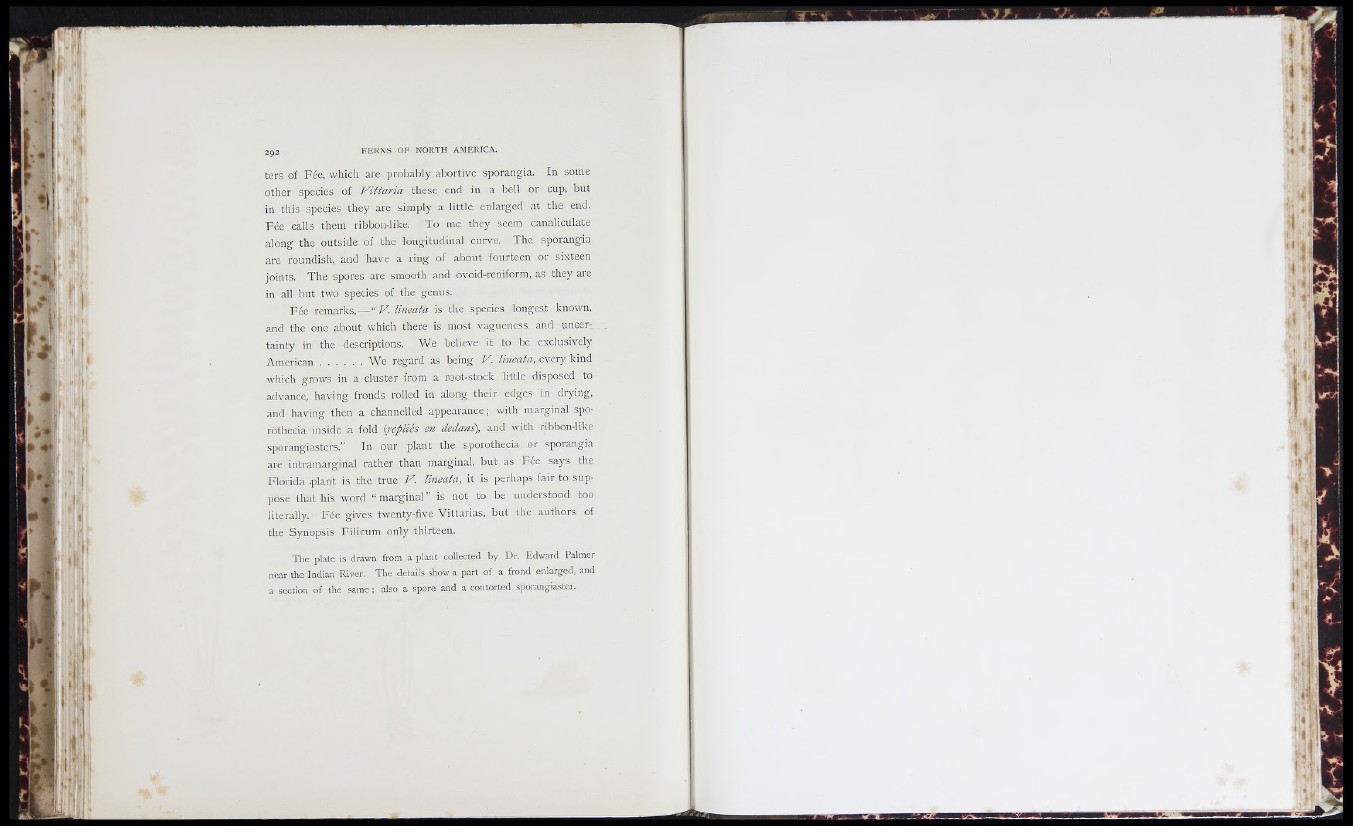
r i . î i '
r
:■
U ’ V r i \
> Il '■
\ r !
f
i'
r
c ; ,
»1
ters of Fée, which are probably abortive sporangia. In some
other species of Vittaria these end in a bell or cup, but
in this species they are simply a little enlarged at the end.
Fée calls them ribbon-like. To me they seem eanaliculate
along the outside of the longitudinal curve. The sporangia
are roundish, and have a ring of about fourteen or sixteen
joints. The spores are smooth and ovoid-reniform, as they are
in all but two species of the genus.
Fée remarks, — “ V. lineata is the species longest known,
and the one about which there is most vagueness and uncertainty
in the descriptions. We believe it to be exclusively
American................We regard as being V. lineata, every kind
which grows in a cluster from a root-stock little disposed to
advance, having fronds rolled in along their edges in drying,
and having then a channelled appearance; with marginal spo-
rothecia inside a fold {repliés en dedans), and with ribbon-like
sporangiasters.” In our plant the sporothecia or sporangia
are intramarginal rather than marginal, but as Fée says the
Florida .plant is the true V. lineata, it is perhaps fair to suppose
that his word “ marginal ” is not to be understood too
literally. Fée gives twenty-five Vittarias, but the authors of
the Synopsis Filicum only thirteen.
The plate is drawn from a plant collected by Dr. Edward Palmer
near the Indian River. The details show a part of a frond enlarged, and
a section of the same ; also a spore and a contorted sporangiaster.
i
i(
H '.
f I
‘i
<• !